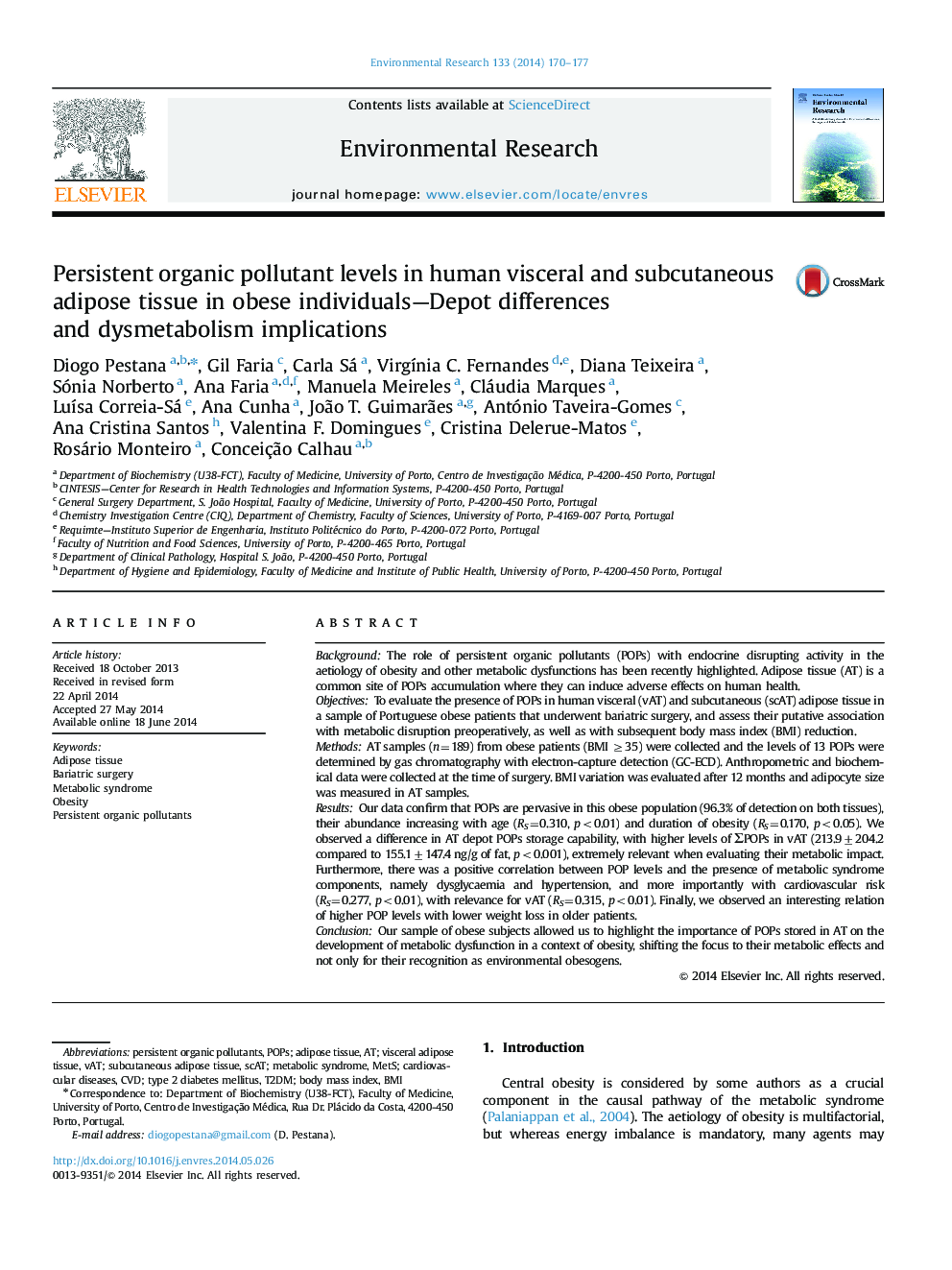| کد مقاله | کد نشریه | سال انتشار | مقاله انگلیسی | نسخه تمام متن |
|---|---|---|---|---|
| 4469710 | 1622568 | 2014 | 8 صفحه PDF | دانلود رایگان |
• POPs are pervasive in this sample of obese patients undergoing bariatric surgery.
• Distinct adipose tissues have dissimilar POPs storage capability.
• Despite the presence of obesity, POPs are important for metabolic dysregulation.
BackgroundThe role of persistent organic pollutants (POPs) with endocrine disrupting activity in the aetiology of obesity and other metabolic dysfunctions has been recently highlighted. Adipose tissue (AT) is a common site of POPs accumulation where they can induce adverse effects on human health.ObjectivesTo evaluate the presence of POPs in human visceral (vAT) and subcutaneous (scAT) adipose tissue in a sample of Portuguese obese patients that underwent bariatric surgery, and assess their putative association with metabolic disruption preoperatively, as well as with subsequent body mass index (BMI) reduction.MethodsAT samples (n=189) from obese patients (BMI ≥35) were collected and the levels of 13 POPs were determined by gas chromatography with electron-capture detection (GC-ECD). Anthropometric and biochemical data were collected at the time of surgery. BMI variation was evaluated after 12 months and adipocyte size was measured in AT samples.ResultsOur data confirm that POPs are pervasive in this obese population (96.3% of detection on both tissues), their abundance increasing with age (RS=0.310, p<0.01) and duration of obesity (RS=0.170, p<0.05). We observed a difference in AT depot POPs storage capability, with higher levels of ΣPOPs in vAT (213.9±204.2 compared to 155.1±147.4 ng/g of fat, p<0.001), extremely relevant when evaluating their metabolic impact. Furthermore, there was a positive correlation between POP levels and the presence of metabolic syndrome components, namely dysglycaemia and hypertension, and more importantly with cardiovascular risk (RS=0.277, p<0.01), with relevance for vAT (RS=0.315, p<0.01). Finally, we observed an interesting relation of higher POP levels with lower weight loss in older patients.ConclusionOur sample of obese subjects allowed us to highlight the importance of POPs stored in AT on the development of metabolic dysfunction in a context of obesity, shifting the focus to their metabolic effects and not only for their recognition as environmental obesogens.
Journal: Environmental Research - Volume 133, August 2014, Pages 170–177
